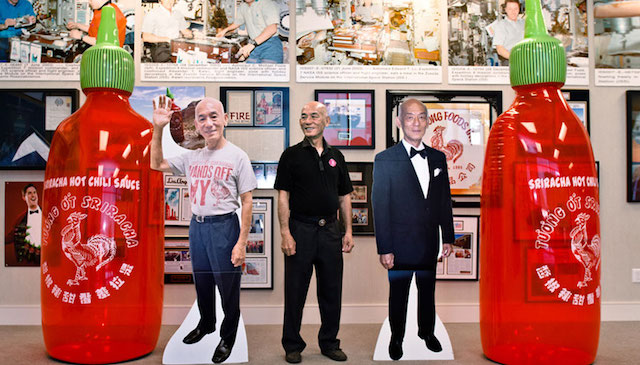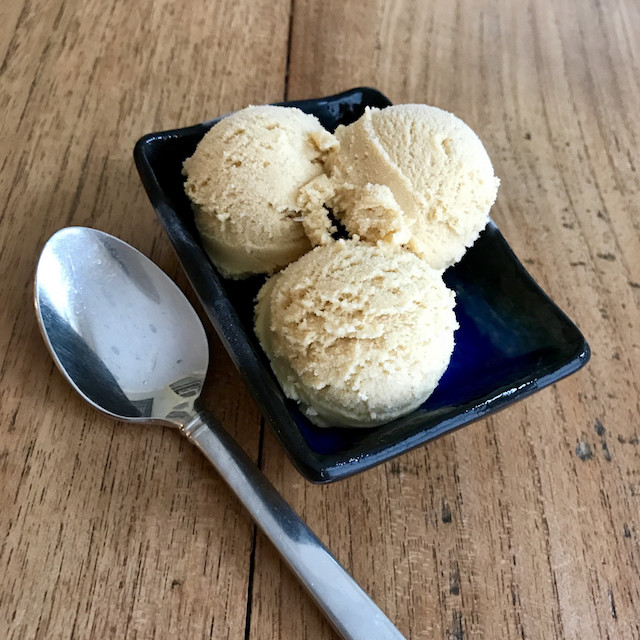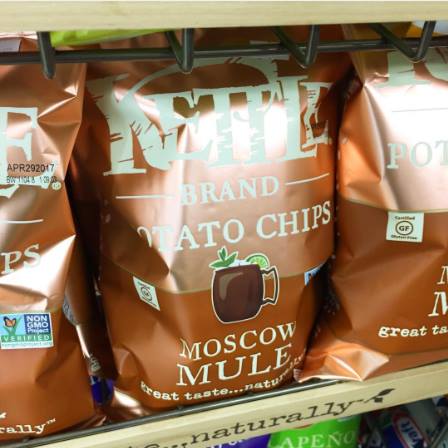 Photo via @jamessyhabout[/caption]
- Hopefully you got a chance to eat at Hawker Fare Oakland before it closed last weekend. Chef James Syhabout (who also opened Oakland's Michelin-starred Commis) opened the original location of his Issan Thai restaurant in 2011, but Hawker Fare closed due to Oakland's "rising wages, pricey real estate and competition for customers." Although Hawker Fare was popular and garnered great reviews, Syhabout claims it wasn't sustainable to keep it going while paying workers above minimum wage and competing with all the restaurants that have been popping up in Oakland. Not to mention the new building owners, who were MIA when Syhabout attempted to get in touch with them to renegotiate a lease. Syhabout told Hoodline, "I love the romance of owning a restaurant and being the chef — but man, earning three percent in a good month?" And on top of the local Bay Area affordability issue, there's that national problem of people expecting "authentic" ethnic food to be cheap. Even one commentor on Hoodline wrote, "Oakland is lacking places for us of a certain age who wish to eat adult food in an environment where we can have an adult conversation. Or authentic ethnic food. I am not alone." But is a place not "authentic" if it's ethnic and expensive? How can ethnic restaurants break the chain of the cheap eats stereotype, while paying their staff fairly and making good food without making it a losing venture? This is something all restaurant owners will have to keep in mind, because the problem isn't going away. (Hoodline)
- This article, called "I'm a commis in a Chinese restaurant kitchen, this is what I do," will give you a whole new respect for the behind-the-scenes action at a restaurant. The writer, Melissa Tsang, a 23-year-old Chinese Singaporean, breaks down the structure of a Chinese restaurant kitchen and the everyday work that happens there. It's a fascinating peek behind the curtain, giving a sense of the enormity of work (teamwork makes the dream work!) that happens at a restaurant to make all that food appear on tables. Tsang even draws diagrams of the work areas and explains how an order is processed. (The Middle Ground)
[caption id="attachment_29119" align="aligncenter" width="600"]
Photo via @jamessyhabout[/caption]
- Hopefully you got a chance to eat at Hawker Fare Oakland before it closed last weekend. Chef James Syhabout (who also opened Oakland's Michelin-starred Commis) opened the original location of his Issan Thai restaurant in 2011, but Hawker Fare closed due to Oakland's "rising wages, pricey real estate and competition for customers." Although Hawker Fare was popular and garnered great reviews, Syhabout claims it wasn't sustainable to keep it going while paying workers above minimum wage and competing with all the restaurants that have been popping up in Oakland. Not to mention the new building owners, who were MIA when Syhabout attempted to get in touch with them to renegotiate a lease. Syhabout told Hoodline, "I love the romance of owning a restaurant and being the chef — but man, earning three percent in a good month?" And on top of the local Bay Area affordability issue, there's that national problem of people expecting "authentic" ethnic food to be cheap. Even one commentor on Hoodline wrote, "Oakland is lacking places for us of a certain age who wish to eat adult food in an environment where we can have an adult conversation. Or authentic ethnic food. I am not alone." But is a place not "authentic" if it's ethnic and expensive? How can ethnic restaurants break the chain of the cheap eats stereotype, while paying their staff fairly and making good food without making it a losing venture? This is something all restaurant owners will have to keep in mind, because the problem isn't going away. (Hoodline)
- This article, called "I'm a commis in a Chinese restaurant kitchen, this is what I do," will give you a whole new respect for the behind-the-scenes action at a restaurant. The writer, Melissa Tsang, a 23-year-old Chinese Singaporean, breaks down the structure of a Chinese restaurant kitchen and the everyday work that happens there. It's a fascinating peek behind the curtain, giving a sense of the enormity of work (teamwork makes the dream work!) that happens at a restaurant to make all that food appear on tables. Tsang even draws diagrams of the work areas and explains how an order is processed. (The Middle Ground)
[caption id="attachment_29119" align="aligncenter" width="600"] Photo via @xianfoods[/caption]
- While the staff at a successful restaurant is akin to a well-oiled machine working in unison, the ownership isn't always quite so cooperative. Take for instance David Shi, patriarch of famed noodle joint, Xi’an Famous Foods in Flushing, NYC, who has been secretly opening restaurants without even his son and CEO of the company knowing about them. Shi has opened a few restaurants, including Qin Ling and now, a new dumpling restaurant called Dumpling Spot, on the sly. His son, Jason Wang, seems to take it in stride, at least publicly, explaining that while it can be annoying, his dad's secret experiments have their advantages. He tells Eater, "Sometimes, maybe we do need to sort of take some risks — and do some things that I usually wouldn’t be comfortable doing — for the betterment of the business." He sees it as a way to test out new ideas, without investing too much in an experiment. Even Dumpling Spot, Wang says, is most probably just a temporary venture – a pop-up. (Eater)
Photo via @xianfoods[/caption]
- While the staff at a successful restaurant is akin to a well-oiled machine working in unison, the ownership isn't always quite so cooperative. Take for instance David Shi, patriarch of famed noodle joint, Xi’an Famous Foods in Flushing, NYC, who has been secretly opening restaurants without even his son and CEO of the company knowing about them. Shi has opened a few restaurants, including Qin Ling and now, a new dumpling restaurant called Dumpling Spot, on the sly. His son, Jason Wang, seems to take it in stride, at least publicly, explaining that while it can be annoying, his dad's secret experiments have their advantages. He tells Eater, "Sometimes, maybe we do need to sort of take some risks — and do some things that I usually wouldn’t be comfortable doing — for the betterment of the business." He sees it as a way to test out new ideas, without investing too much in an experiment. Even Dumpling Spot, Wang says, is most probably just a temporary venture – a pop-up. (Eater)
 - Speaking of a man who insists on doing it his way, meet David Tran, founder and chief executive of Huy Fong Foods, who makes the famous and beloved "rooster" Sriracha hot sauce. In 2013, the city of Irwindale, where Huy Fong Foods is located, sued the company, calling it a public nuisance after some area residents complained about odors created by the chili grinding. Instead of becoming defensive and closed off, that's when Tran decided to open his factory to the public, against the judgment of his family and staff, who thought it was too risky to invite possible competitors behind the scenes. Still, Tran persisted. The 650,000 square foot Huy Fong Foods factory is open for free tours; the website even encourages photos and videos: "Cameras welcome! Take as many photos and/or videos as you want!" Now fans come in droves. And after the company installed new filtration systems, the city of Irwindale dropped the lawsuit. (East West Bank)
- If you're heading to Japan anytime soon, you'll want to pay attention here. Tabelog is a comprehensive, crowd-sourced and rated catalog of restaurants in Japan. Most importantly, it's being touted as reliably trustworthy. Unlike other crowd-sourced review sites, a la Yelp, the standards for ratings on Tabelog are known to be incredibly high. There are currently no five-star restaurants on the site, and just a few that have managed to get a rating of 4.5 stars or above. The one caveat is the English-only version of Tabelog is harder to use and not as comprehensive. (Eater)
- Speaking of a man who insists on doing it his way, meet David Tran, founder and chief executive of Huy Fong Foods, who makes the famous and beloved "rooster" Sriracha hot sauce. In 2013, the city of Irwindale, where Huy Fong Foods is located, sued the company, calling it a public nuisance after some area residents complained about odors created by the chili grinding. Instead of becoming defensive and closed off, that's when Tran decided to open his factory to the public, against the judgment of his family and staff, who thought it was too risky to invite possible competitors behind the scenes. Still, Tran persisted. The 650,000 square foot Huy Fong Foods factory is open for free tours; the website even encourages photos and videos: "Cameras welcome! Take as many photos and/or videos as you want!" Now fans come in droves. And after the company installed new filtration systems, the city of Irwindale dropped the lawsuit. (East West Bank)
- If you're heading to Japan anytime soon, you'll want to pay attention here. Tabelog is a comprehensive, crowd-sourced and rated catalog of restaurants in Japan. Most importantly, it's being touted as reliably trustworthy. Unlike other crowd-sourced review sites, a la Yelp, the standards for ratings on Tabelog are known to be incredibly high. There are currently no five-star restaurants on the site, and just a few that have managed to get a rating of 4.5 stars or above. The one caveat is the English-only version of Tabelog is harder to use and not as comprehensive. (Eater)
 - Soy sauce ice cream. Yep, and it's good, too. The flavor is sorta like salted caramel. Intrigued? Try making it yourself with this recipe, which uses double-brewed shoyu. (The Japanese Pantry)
[caption id="attachment_29127" align="aligncenter" width="448"]
- Soy sauce ice cream. Yep, and it's good, too. The flavor is sorta like salted caramel. Intrigued? Try making it yourself with this recipe, which uses double-brewed shoyu. (The Japanese Pantry)
[caption id="attachment_29127" align="aligncenter" width="448"] Photo by John Lombardo[/caption]
- Here's another unexpected combo: Moscow Mule potato chips. Kettle Brand's newest flavor is based on the classic cocktail that's made with vodka, ginger beer, and lime, and traditionally served in a copper mug. The potato chips, sadly do not contain vodka, which means they tastes more like "ginger beer/Sprite chips" than an actual Moscow Mule, at least according to an A.V. Club staffer who tasted them. The lukewarm review makes me think that some things are probably best not made into potato chips. (A.V. Club)
- And now for zomething completely different: Zima is back! MillerCoors is bringing back the '90s throwback to the States (superfans know Zima is still sold in Japan) for a limited time, because, according to a MillerCoors spokesperson, there's been a huge demand for the clear malt beverage. "If you’re one of the zillion fans who have missed Zima, the answer should be clear." Nice Zima pun, dude. (Dlisted)
Photo by John Lombardo[/caption]
- Here's another unexpected combo: Moscow Mule potato chips. Kettle Brand's newest flavor is based on the classic cocktail that's made with vodka, ginger beer, and lime, and traditionally served in a copper mug. The potato chips, sadly do not contain vodka, which means they tastes more like "ginger beer/Sprite chips" than an actual Moscow Mule, at least according to an A.V. Club staffer who tasted them. The lukewarm review makes me think that some things are probably best not made into potato chips. (A.V. Club)
- And now for zomething completely different: Zima is back! MillerCoors is bringing back the '90s throwback to the States (superfans know Zima is still sold in Japan) for a limited time, because, according to a MillerCoors spokesperson, there's been a huge demand for the clear malt beverage. "If you’re one of the zillion fans who have missed Zima, the answer should be clear." Nice Zima pun, dude. (Dlisted)
The Umami Reader: Mining the internet for stuff about food worth reading and watching




Comments (1)
I remember reading that statement, “Oakland is lacking places for us of a certain age who wish to eat adult food in an environment where we can have an adult conversation. Or authentic ethnic food. I am not alone”.
What I took from that statement was my own thoughts of how Hawker Fare was so loud; even a crazy homeless person couldn’t have a conversation with themselves because of the noise level. This was probably the #1 reason I didn’t go as often as I liked; pricing was never a factor {and yes, they eventually added something up on the wall to absorb some of the sound, but it still always was my first thought of the place}.
Maybe the OP was pointing out that {possibly} food in Oakland have been “Americanized” to a ‘Nth” degree that it takes away from the overall “ethnic” feeling/flavour that he/she knows of.
The problem is everyone has a different view/definition/experience of what they know or considers authentic.
I’ll be the first to admit, I’ve never been to Thailand; but those who I know who have been, have shared that the street food that they got was really tasty and cheap (in comparison to here in the US). When I lived in Seattle, I went regularly to one place who made their own curries from scratch, hot sauces and street food; and it was reasonably priced. The Thai owners were super-friendly and I felt that the food was pretty authentic to what I could get, as it was their passion to share those old school dishes. When I go back to Seattle, I still visit and make sure I have time to have a meal.
I’ve lived for several months in Singapore, and ate many a meals at the hawker centers; and got really good tasting plate of food, all for less than $7 USD.
I know first-hand that I can get a gosh darn great bowl of ramen, almost every day everywhere in Tokyo, again, all for less than $10 USD. I think, Tokyo actually has several Michelin starred restaurants that have offerings that are less then $12 USD.
My experience has taught me that certain “cheap eats” is out there; and it’s “authentic”. But what is authentic now a days anyways… Rick Bayless has done great job in serving up Mexican food, but he’s not Hispanic. Ivan Orkin has done great with his ramen, but he’s not Japanese. Does it make it any less authentic; no.
But the reality is, here in the US, certain chefs cooks and customers value organic, farm raised, locally sourced, sustainability… blah blah blah; so duh, all that is going to jack of the food cost. It’s not rocket science!
Also, yes, all restaurant employees should/needs to make a living wage… so again, that’s going to impact pricing even further.
At the end of the day, the consumers pays the burden for it all; whereas in the past, restaurants absorb the loss, but it’s not a sustainable smart model (or at least I don’t think so).